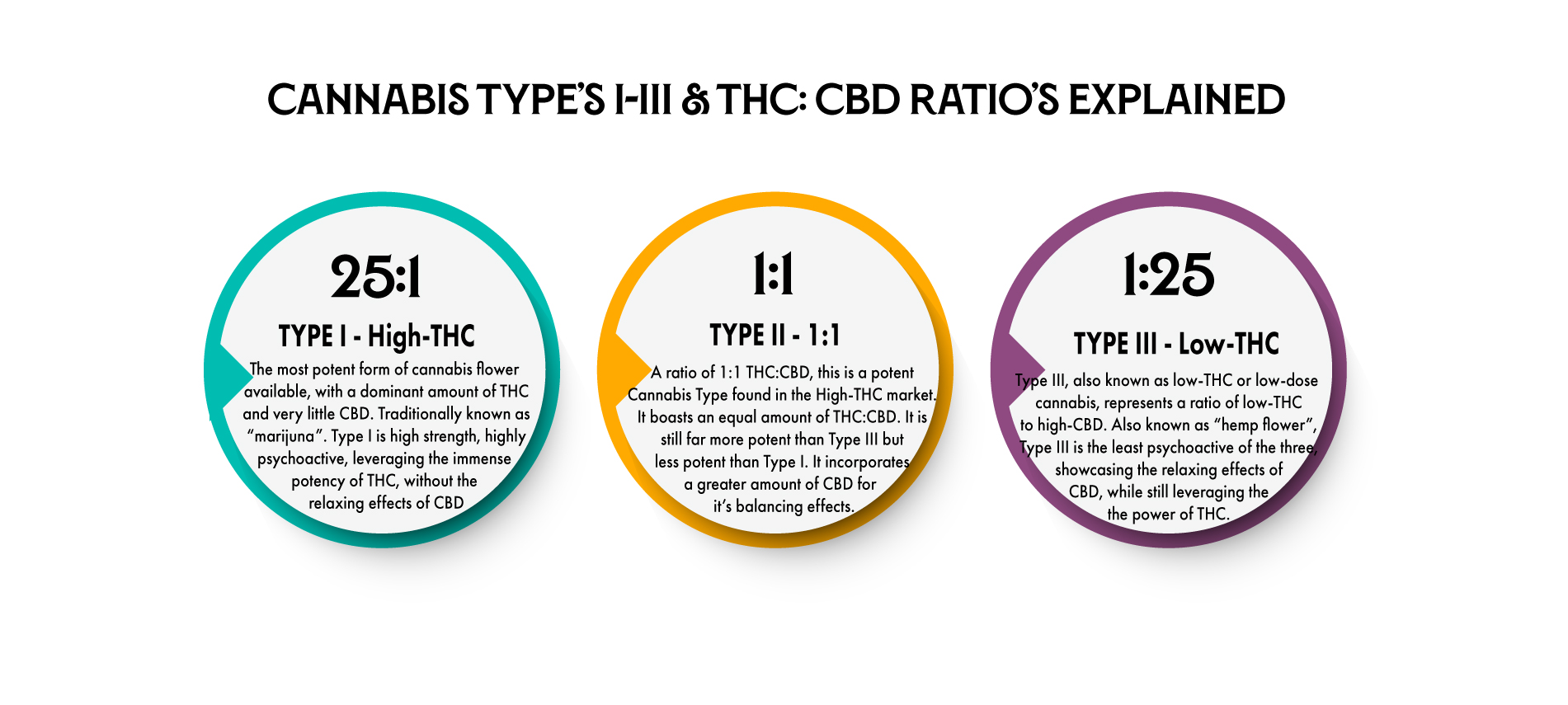See above Tables to better understand the cannabis Type Classes and their corresponding THC:CBD Ratios
Type III cannabis genetics represent the category of Cannabis Sativa L that is hemp flower. Hemp Flower is cannabis sativa l. Type III cannabis and it is different from Type II and Type I only as it relates to the concentration of THC found in each type class. Tetrahydrocannabinol delta -9, otherwise known as THC, is the predominant psychoactive cannabinoid found in traditional Marijuana that is responsible for getting you “high”. THC concentrations found in cannabis are a direct representation of the genetic makeup of the cannabis genetics for each respective class.
The ratio of THC:CBD for Type I is typically ~25:1 also known as High-THC cannabis.
The ratio of THC:CBD for Type II is typically ~1:1 also known as 1:1.
The ratio of THC:CBD for Type III is typically ~1:25 also known as Low-THC Cannabis or Hemp Flower
To be clear, hemp flower naturally produces THC in a minimum dose manner with CBD as the majority; low-level of THC equates to a high-level of CBD and a low-level of CBD equates to a high-level of THC, naturally, in cannabis and represents a natural inverse ratio that the plant physiology reflects, genetically
It is our belief that a ow-THC minimum effective dose approach to cannabis consumption could help disillusion a lot the negative stereotypes driven in large part by federal propaganda and negative press during the 1940’s, 50’s and 60’s that have meant to associate cannabis consumption with violence, psychosis, anxiety, paranoia, etc., which seem to have been attributed wrongly or rightly, resulting in a negative demonization of THC. THC should not be demonized as it is not an evil compound, but it is a very powerful cannabinoid and for people that do not have a built-up tolerance, a little can go a very long way. There is also some consensus among addiction psychiatrists that the more potent a drug is, the stronger the possibility of addiction and the more likely the person will continue to purchase and use the product. The potency of THC has risen quite precipitously in the past two decades that it has seemed to skew the market towards a larger and larger dose per serving of THC. Even products touted as low-THC cannabis products with ratios in the 1:1, 1:2, 1:4, etc THC:CBD % are not low enough for many first-time users without increasing the probability for these users to incur a negative effect.
There is a belief that THC should be presented to people, new users primarily, in the most bottom-up of fashions in a minimum effective dose approach. Hence the profound opportunity for type III genetics/hemp flower to be the natura vehicle for presenting THC to the Endocannabinoid system in a natural minimum dose ratio set by the plant, with ratios closer to 1:25 THC:CBD.
Even at this ratio there is a sizable portion of new cannabis users that will respond positively and report noticeable psychoactive effects.
It is from this base point of view that Type III cannabis genetics can begin to position users with the ability to titrate their THC use from a minimum threshold upward. This can enable someone to find their own personal desired levels of THC consumption based on their own specific needs and natural sensitivities, working up from a minimum effective dose manner. This idea is most important for unprocessed hemp/cannabis flower which the market has seemed to be responding to in substantial fashion, as hemp flower consumption is on the rise and many people are seeing the smokable hemp market as a growing segment of overall cannabis.

